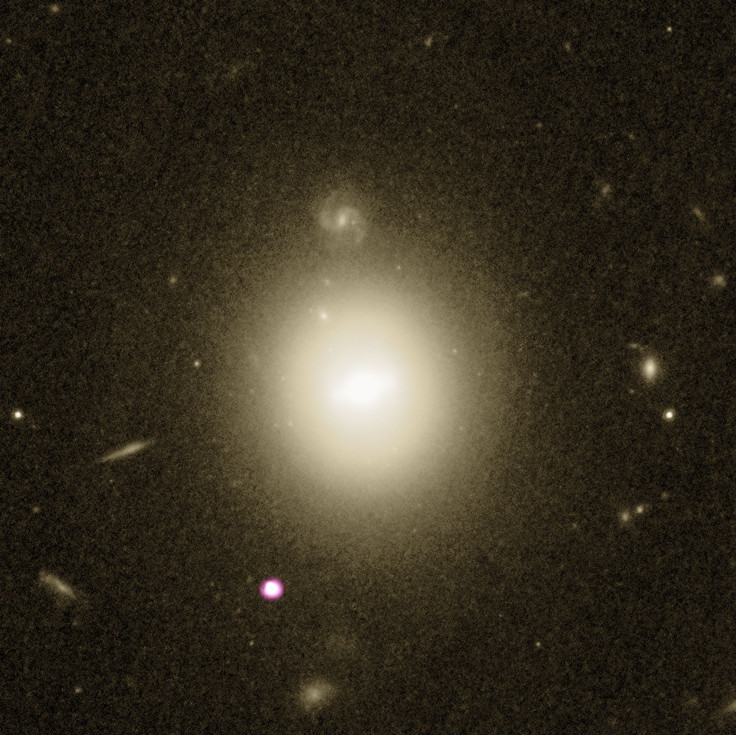Unusual Black Hole Spotted Feasting On Star 740 Million Light-Years Away

For years, astronomers have known about the existence of stellar mass black holes that form after the death of stars as well as supermassive black holes, their bigger counterparts that weigh equal to millions or billions of suns and are usually found at the center of galaxies. Both these objects have been observed on several occasions, but there is also an elusive black hole that sits between stellar mass and supermassive and has long been a point of debate — intermediate-mass black holes (IMBHs).
IMBHs are hard to detect, but recently, a group of researchers from the University of New Hampshire spotted the rare breed devouring and shredding a star in a galaxy hundreds of millions light years away from Earth, giving us a clear evidence of their existence.
Scientists believe these enigmatic voids form from mergers of massive stars in dense star clusters, which could a hotbed to look for them. But, not many of them have been seen because by the time these black holes form, the surrounding region is devoid of all the gas. This means there is no material left for the black hole to consume and emit radiation that can be used to observe them.
However, there is always the option of scouring the skies and looking for an event wherein a star wanders too close to the black hole and is devoured into it, thanks to the void’s intense gravitational tug.
The occurrence, known as tidal disruption event, presents a great opportunity and the research team from Hampshire used the exact same idea to spot the rare kind of black hole in a distant galaxy 740 million light years away from Earth.
The group employed European Space Agency’s XMM-Newton X-ray space observatory, as well as NASA’s Chandra X-Ray Observatory and Swift X-Ray Telescope to detect an enormous flare of radiation produced as the black hole shredded a star.
When a star is torn apart by a black hole, some of its material is flung outward, while most of it is ingested by the void. This material is heated to millions of degrees resulting in a flare similar to the one the group detected.
“We spotted the source flaring in brightness in two images from 2005 — it appeared far bluer and brighter than it had just a few years previously,” study co-author Jay Strader said in a statement. “By comparing all the data we determined that the unfortunate star was likely disrupted in October 2003 in our time, and produced a burst of energy that decayed over the following 10 years or so.”
As the distribution of photons in the emitted radiation depends directly on the size of the black hole, the group was able to use the data to determine the weight of the void and confirm it as an intermediate-mass black hole.
“We feel very lucky to have spotted this object with a significant amount of high-quality data, which helps pinpoint the mass of the black hole and understand the nature of this spectacular event,” Dacheng Lin, lead author of the study, said in another statement. “Earlier research, including our own work, saw similar events, but they were either caught too late or were too far away.”
The study titled, “A luminous X-ray outburst from an intermediate-mass black hole in an off-center star cluster,” was published June 18 in the journal Nature Astronomy.
© Copyright IBTimes 2025. All rights reserved.





















